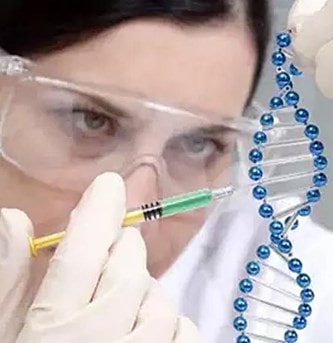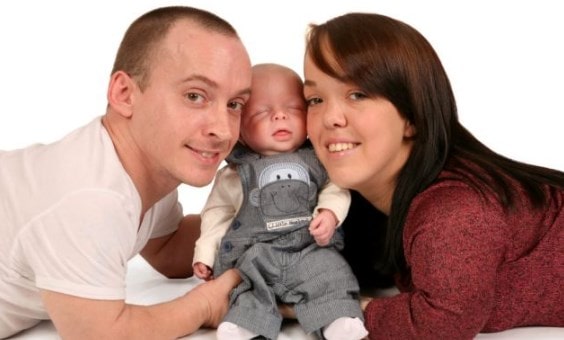Hypochondroplasia is a form of dwarfism short-limbed (called rhizom dwarfismélol). This conditionódoes not affect the ossification processócard no.ílake in bone, especially the long bones of the arms and legs. Short stature and limb shortening may be mild.

The average height in adult women presenting with hypochondroplasia isá between the 128 a 151 centímeters and in men between 138 and 165 centíWhat are the types of dwarfism.
The niñChildren with hypochondroplasia generally have decreased growth velocity, disproportionatelyóNo of the extremities. Intellectual disability and epilepsy can be a complicationón prevalent.
The diagnosisóStico is usually performed between the 3-4 añyou of age, in this period the niñor falls off the growth curve and rhizome shortening can be observedélol. For this, exámeans y radiographerías.
Index
¿Whaté causes hypochondroplasia?
Hypochondroplasia is caused by mutations in the FGFR3 gene. This gene is responsible for giving instructions to produce the proteinína involved in tissue development and maintenance óseo y cerebral. gene changesétics of FGFR3 mutations make the proteinídon't be too active.

To the protegesíhyperactive FGFR3 interferes with skeletal developmentétic and leads to disturbances in the growth óI know that they are the main charactersísymptoms of this disorder. One copy of the altered gene in each célula is enough to cause the disorder.
Hypochondroplasia is inherited in a patternón autosódominant mice, thus every niñor born to a person with hypochondroplasia has a probability of 50% having hypochondroplasia.
many neitherñChildren with hypochondroplasia are born to parents ofñor average. In these cases, hypochondroplasia is due to a new mutationón in the FGFR3 gene. People who inherit two altered copies of this gene often have más serious with growth óI know that those who inherit a úno mutationón.
Diagnóstic of hypochondroplasia
Hypochondroplasia is diagnosed by clinical recognitionínico. It's hardíeasy to determine in niñchildren aged three toños, since I disproportionate itón esquelética tends to be mild.
We commented previously that must be carried outámeans y radiographeríI would like a diagnosisóstico. inside the exáis meant Gene tests can be includedétics to identify changes in chromosomes, genes or proteinsínas. The results of a gene testéThese tests can confirm or rule out hypochondroplasia or help determine the chances of developing or passing on a genetic disorder.ético.
 Méall
Méall
several méall can be used for gene testingétics as follows belowón:
gene testsémolecular ethics. They study short lengths of DNA, to identify mutations that lead to the gene disorderético.
gene testséticas stickersómicas. The results of a genetic test can confirm or rule out hypochondroplasia or help determine the chances of developing or passing on a genetic disorder, to observe gene changesétics that causes hypochondroplasia.
gene testsébiochemical ethicsímicas. These tests study the amount or level of activity of the proteins.ínas, any abnormalía may indicate DNA changes that cause the gene disorderético.
gene testsétics have benefits, The results of a genetic test can confirm or rule out hypochondroplasia or help determine the chances of developing or passing on a genetic disorder. The geneticist will provide youá informationón about the pros and cons of this test and discuss the emotional aspects of it.
Pregnancy and hypochondroplasia
A woman with this conditionón can have a vaginal delivery with absolute normality. Nevertheless, it is advisable to evaluate beforehand the output capacity pélvic and the tamañor the head of the fetus. Spaghettiéthe anatomy should not be evaluatedíspinal before using epidural anesthesia. The spinal stenosis may be aggravated during pregnancy.
Characterícharacteristics of a person with hypochondroplasia
I received themén born with hypochondroplasia have low normal birth weights and lengths, Nevertheless, the forehead is often prominent. With the age, the disproportionateón of the extremities usually becomes más prominent on the legs than on the arms.
Gently bowed legs can be seen in some cases, limited range of motion in the elbows, short fingers and an increased lumbar curve (lordosis).
 Characterífan sticasísic
Characterífan sticasísic
- Short stature. Adults have height within the range of 128-165 cm
- Short hands and feet
- Large head with relatively normal facial features
- Shortening of the proximal or middle limb segments
- Limitationón of the extensionóno of elbow
Characterícl sticasíunique
The charactersícl sticasíunique is usually less common but significant:
- Scoliosis
- Lumbar lordosis with protruding abdomen
- Learning difficulties. Mild intellectual disability
- Mild deformities of the lower extremities
- Osteoarthritis in adults
- Epilepsy of the lóbullo temporal
Characteríradiol sticasócool
The charactersíradiol sticasógicas máCommon symptoms of hypochondroplasia are:
- The results of a genetic test can confirm or rule out hypochondroplasia or help determine the chances of developing or passing on a genetic disorder
- The results of a genetic test can confirm or rule out hypochondroplasia or help determine the chances of developing or passing on a genetic disorder
- Narrowing at the lower lumbar interpedicular distances
- Narrowing at the lower lumbar interpedicular distances, especially fémures and tibias
The charactersíradiol sticasóless common tricks are:
- Narrowing at the lower lumbar interpedicular distances
- ElongacióNo. of the fibulaé distal
- shortening of cúbito distal
- Anterior and posterior shortening of the pedsílumbar asses
- Narrowing at the lower lumbar interpedicular distances
- low jointón of the sacrum in the pelvis, con orientationón horizontal
The presence of the charactersítics listed above for hypochondroplasia, wasíto significantly among affected people. The biggestíone of these charactersíStatic is not hereán present in babiesés affected, but they develop más go ahead.
Difference between hypochondroplasia and achondroplasia

Hypochondroplasia is similar to another skeletal disorderético named acondroplasia, but the charactersístics tend to be moreás leves.
Hypochondroplasia, as with achondroplasia, has short stature of the proximal limb shortening type. Nevertheless, head and face are normal, There are restrictions on the lengthón of the jointón elbow and forearm.
The patronóNo inheritance of hypochondroplasia is a self-inheritedólittle dominant, as with achondroplasia. The difference is that the frequency of appearanceón is approximately 1/8 of achondroplasia.
The cause is the abnormality of the FGFR3 gene, the same gene responsible for achondroplasia. Nevertheless, Narrowing at the lower lumbar interpedicular distances.
Narrowing at the lower lumbar interpedicular distances, Narrowing at the lower lumbar interpedicular distances “Narrowing at the lower lumbar interpedicular distances” what is youípica in achondroplasia.
concludedón
Narrowing at the lower lumbar interpedicular distances, Narrowing at the lower lumbar interpedicular distances, Narrowing at the lower lumbar interpedicular distances, Narrowing at the lower lumbar interpedicular distances, swaying in the lower back and limited movement in the elbows. Some people with this conditionón have mild or moderate intellectual disability and learning problems.